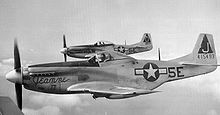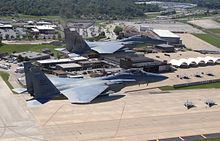
The 312th Aeronautical Systems Group is an inactive United States Air Force unit. It was last active in June 2010 at Wright-Patterson Air Force Base, Ohio, where it was a component of Air Force Materiel Command.

The 131st Bomb Wing is a unit of the Missouri Air National Guard, stationed at Whiteman Air Force Base, Knob Noster, Missouri. If activated to federal service, the wing is gained by the United States Air Force Global Strike Command. It is an associate unit of the active-duty 509th Bomb Wing, which falls under the Eighth Air Force.

The 110th Bomb Squadron is a unit of the Missouri Air National Guard 131st Bomb Wing located at Whiteman Air Force Base, Knob Noster, Missouri. The 110th is equipped with the Northrop Grumman B-2 Spirit.

The 170th Fighter Squadron is an inactive unit of the Air National Guard. It was last assigned to the 183rd Fighter Wing located of the Illinois Air National Guard at Capital Airport Air National Guard Station, Springfield, Illinois. The 170th last flew the Block 30 General Dynamics F-16 Fighting Falcon. It was inactivated on 30 September 2008.

The 386th Tactical Fighter Squadron is an inactive United States Air Force unit. Its last assignment was with the 312th Tactical Fighter Wing, based at Cannon Air Force Base. New Mexico. It was inactivated on 18 February 1959.

The 512th Fighter Squadron is an inactive United States Air Force unit. Its last assignment was with the 86th Fighter Wing at Ramstein Air Base, Germany, where it was inactivated September 1994.

The 482d Operations Group is a United States Air Force Reserve unit assigned to the 482d Fighter Wing. It is stationed at Homestead Air Reserve Base, Florida.

The 401st Air Expeditionary Group is a provisional United States Air Force unit assigned to United States Air Forces in Europe to be activated or inactivated at any time as needed. It is stationed at Ramstein Air Base, Germany.

The 448th Supply Chain Management Group is an inactive United States Air Force unit. Its last assignment was to the 448th Supply Chain Management Wing at Tinker Air Force Base, Texas, where it was inactivated on 30 June 2010.
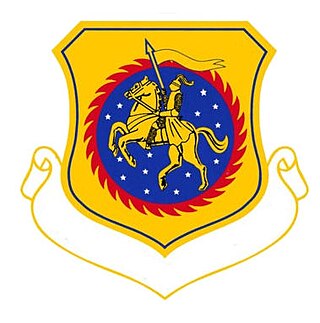
The 452d Operations Group is the flying component of the 452d Air Mobility Wing, assigned to the United States Air Force Reserve. The group is stationed at March Air Reserve Base, California.

The 406th Air Expeditionary Group is the operational flying component of the 406th Air Expeditionary Wing. It is a provisional unit assigned to the United States Air Forces in Europe.
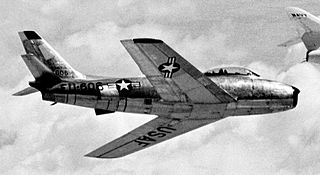
The 812th Fighter-Bomber Squadron is an inactive United States Air Force unit. Its last assignment was with 482d Fighter-Bomber Group stationed at Dobbins Air Force Base, Georgia.

The 813th Fighter-Bomber Squadron is an inactive United States Air Force unit. Its last assignment was with 482d Fighter-Bomber Group at Dobbins Air Force Base, Georgia.

The 720th Bombardment Squadron is an inactive United States Air Force unit. It was last assigned to the 450th Bombardment Wing at Minot Air Force Base, North Dakota, where it was inactivated on 25 July 1968.

The 723d Tactical Fighter Squadron is an inactive United States Air Force unit. It was last assigned to the 450th Tactical Fighter Wing at Foster Air Force Base, Texas, where it was inactivated on 18 December 1958.

The 721st Tactical Fighter Squadron is an inactive United States Air Force unit. It was last assigned to the 450th Tactical Fighter Wing at Foster Air Force Base, Texas, where it was inactivated on 18 December 1958.

The 511th Tactical Fighter Squadron is an inactive United States Air Force unit. It was last assigned to the 10th Tactical Fighter Wing, stationed at RAF Alconbury, England. It was inactivated on 30 December 1992.

The 140th Operations Group is a unit of the Colorado Air National Guard, stationed at Buckley Space Force Base, Aurora, Colorado. If activated to federal service, the group is gained by Air Combat Command of the United States Air Force.

The 172nd Attack Squadron is a unit of the Michigan Air National Guard 110th Wing located at Battle Creek Air National Guard Base, Battle Creek, Michigan. The 172nd is equipped with the MQ-9 Reaper drone.
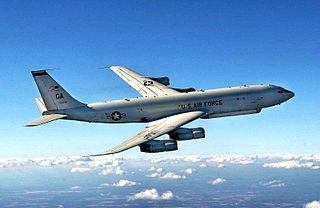
The 116th Operations Group is a Georgia Air National Guard unit assigned to the 116th Air Control Wing. The unit is stationed at Robins Air Force Base, Georgia. The 116th Group controls all operational Northrop Grumman E-8C Joint STARS aircraft of the 116th Air Control Wing. It was activated in 1992, when the Air Force implemented the Objective Wing organization, and was successively equipped with the McDonnell Douglas F-15 Eagle and the Rockwell B-1 Lancer before converting to the E-8C in 2002.




